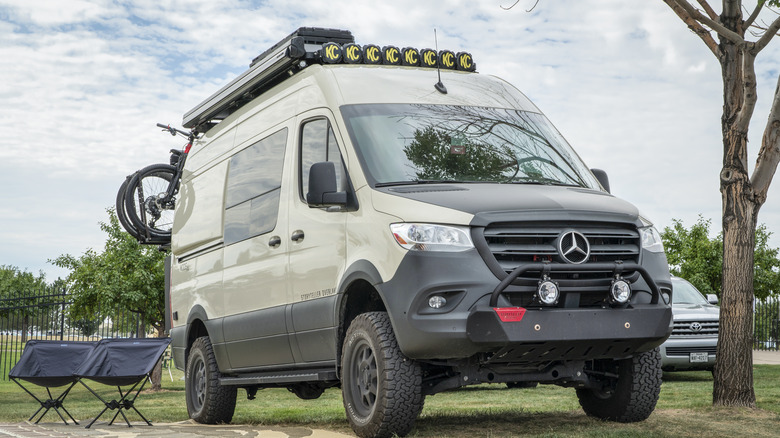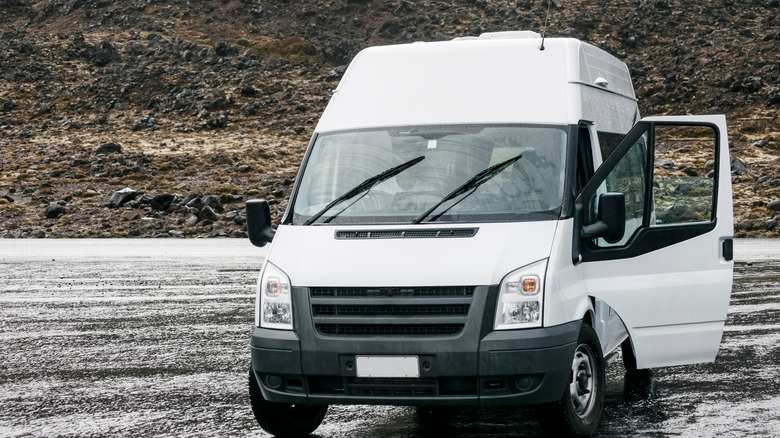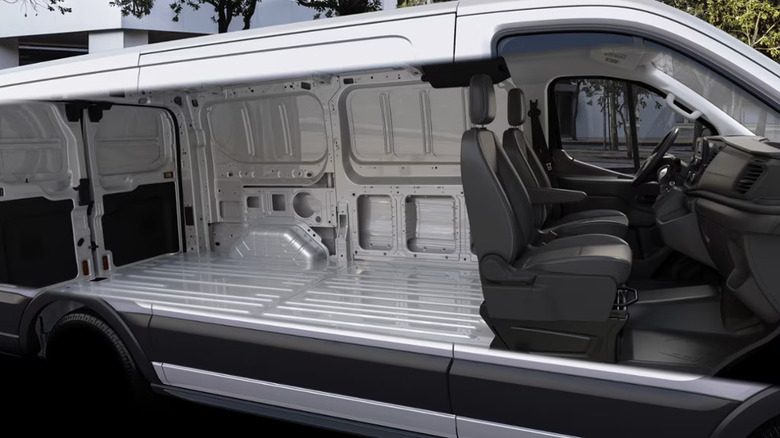Mercedes Sprinter Vs Ford Transit: Which Is The Better Starter Camper Van?
If you're an active social media user or have spent time in a campground in recent years, you have undoubtedly noticed a growing number of folks who have turned cargo vans into semi-permanent living spaces. If you want to get a taste of the "hashtag van life" trend, but even some more affordable ready-made camper vans may be beyond your budget, another option is to buy an empty van and convert it to a camper according to your needs.
Two of the more common van chassis for van conversions are the Mercedes Sprinter and the Ford Transit. Both could be found in urban settings, hauling passengers and cargo before they became popular as bases for camper van conversions. But how else are they similar, and what are the key differences that might make one the better choice if you're considering hitting the road and becoming part of the growing ranks of proud van-dwelling nomads?
Both models are geared towards camper conversions
Ford and Mercedes have both seized on the van life trend and made changes with camper conversions in mind. For the 2023 Sprinter, Mercedes dropped the 3.0-liter V6 turbodiesel engine in favor of a 2.0-liter four-cylinder turbodiesel and a gas-fueled 2.0-liter four-cylinder.
Ford introduced the 2023 Transit Trail, which comes in three sizes and includes a power inverter and 4G LTE modem with a built-in WiFi hotspot. While this is an enticing add-on, the hotspot only includes service for three months or 3GB, after which Transit Trail owners will have to subscribe to a compatible AT&T data plan.
The Transit Trail's network hardware, power inverter, and a standard 400-watt 110-volt outlet are advantages that the Sprinter doesn't have, and Ford now offers those extras in its regular Transit cargo van models, which start at $44,455 in comparison to the Transit Trail's base MSRP of $65,975.
The 2023 Sprinter 1500 is priced slightly higher than the base Transit model, starting at $45,795. The Sprinter 2500 costs about $1,000 more, and the larger 3500 starts at a little more than $52,000.
The Sprinter 3500 comes in three sizes: a 144-inch wheelbase model with a 102.8-inch roof as well as two 170-inch wheelbase models, one with a 114.2-inch roof and a high roof extended version that boosts the total interior capacity to 469.4 cubic feet. The biggest Transit, the Long-EL model, has an interior volume of 536.4 cubic feet. The high-roof extended Sprinter 3500 costs $63,235; the Transit Long-EL high-roof model is priced at about $53,000.
Both models come with driver assist technology
The interior height of the high-roof Transit is 110.4 inches, and the driving experience also varies between the Transit and Sprinter. Transit models come standard with a collision avoidance system that can detect other vehicles and pedestrians and apply the brakes automatically. The Transit also has a standard blind spot warning system and a 360-degree camera array to assist with reversing and parking.
2023 Sprinter models come standard with emergency call and brake assist systems. For an additional cost, Mercedes offers an optional 360-degree camera array lane-keeping assist systems, and even a speed limit sign recognition system. Considering that Ford offers 360-degree camera and blind spot warning systems as standard equipment, the Transit may be the more frugal choice once the additional cost of these systems is factored in.
Fuel choice is also a factor; the largest variation of the Sprinter, the 3500, is available only with a diesel engine, while Transit buyers have their choice between a naturally aspirated or turbocharged 3.5 liter gas-fueled V6 motor and a rear-wheel or all-wheel drive chassis. The turbo engine can put out 310 horsepower and 410 pound-feet of torque and gives the Transit a maximum towing capacity of 7,500 pounds, matching the peak ability of the 2023 Sprinter. While in prior years Sprinter buyers were limited to a part-time 4wd drivetrain, like Transit buyers, they can now choose between two-wheel drive and all-wheel drive models at the point of purchase.
Both vans have robust warranties
Ultimately, which van you choose will depend on how you choose to spend your time and money. The Transit Trail leaves you with a little less conversion work to be done. Still, it costs more than the largest Sprinter with a couple of options added on, and buying the high-roof extended Sprinter 3500 will give you more room for storage, kitchen, and living/work space while also leaving you more money to outfit it as suits your needs.
Once you have built out your living space and hit the road, you'll want to know that you have a network of dealer repair facilities ready to help you and a solid warranty protecting you while you travel. Ford backs the Transit with a three-year/36,000 limited warranty and a six-year/60,000 powertrain war. In contrast, while Mercedes' multi-tiered warranty program covers the Sprinter for three years and 36,000 miles and the body and drivetrain for five years and 100,000 miles on a limited basis.
Additional optional extended limited warranties are available from Mercedes for up to seven years and 140,000 miles. While both the Transit and the Sprinter are fine choices for a camper van build, in the end, the Sprinter's longer warranty and Mercedes' reputation as one of the world's most durable vehicles makes the Sprinter the marginally better choice for a long-term investment.


